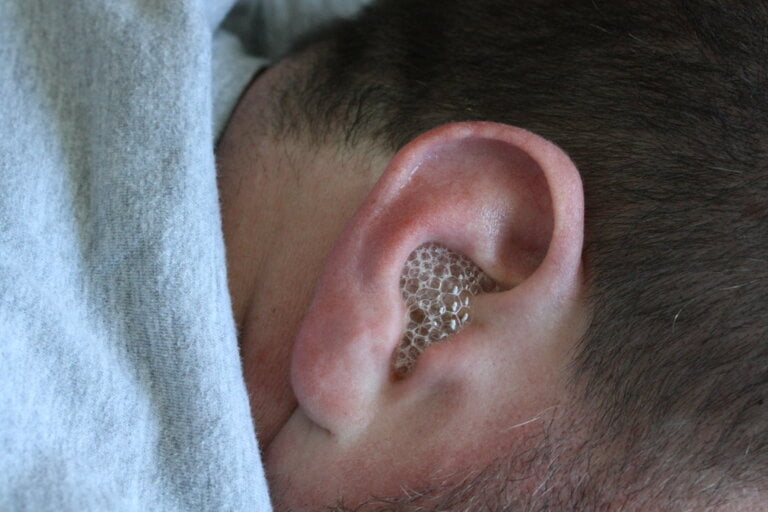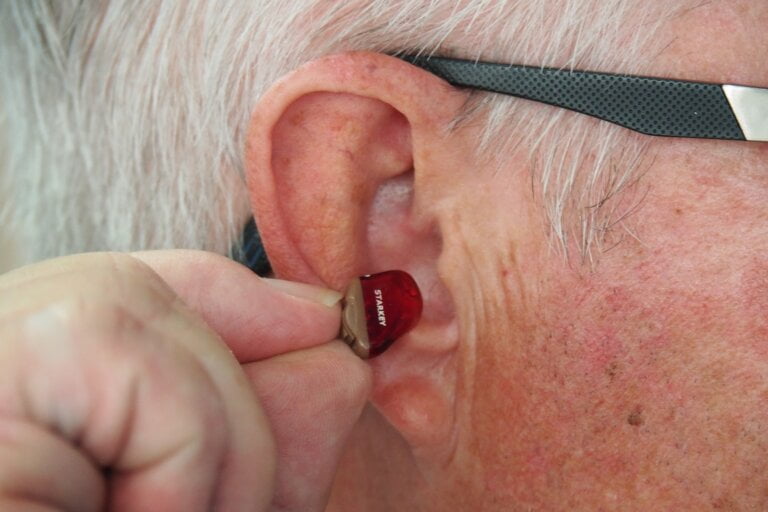Power of Knowledge: Unpacking Continuing Education Opportunities in Microsuction
Continuing education is a crucial aspect of any profession, especially in the ever-evolving field of microsuction. As medical professionals in this specialized field, it is of utmost importance to stay updated with the latest advancements, techniques, and best practices. This is where continuing education opportunities come into play, offering healthcare practitioners the power of knowledge to enhance their skills and provide optimal care to their patients.
The Need for Continuing Education in Microsuction
Microsuction is a minimally invasive procedure used to remove excess earwax, foreign bodies, or other substances from the ear canal. Despite its relative simplicity, the field of microsuction is constantly evolving with new technologies, devices, and improved techniques. As a healthcare professional specializing in microsuction, it is essential to keep up with these advancements to deliver the highest quality of care to patients.
Continuing education provides the avenue for healthcare professionals to enhance their knowledge and skills in microsuction. It enables them to stay updated with the latest research, guidelines, and best practices, ultimately improving patient outcomes and safety.
Benefits of Continuing Education in Microsuction
Continuing education in microsuction offers a myriad of benefits for healthcare professionals. Let’s explore some of the key advantages:
- Enhancing Knowledge and Skills
Continuing education programs in microsuction provide an opportunity to expand knowledge and refine skills. These programs cover various aspects of microsuction, such as anatomy and physiology of the ear, different microsuction techniques, patient assessment, safety measures, and post-procedure care. By acquiring up-to-date knowledge and mastering advanced techniques, healthcare professionals can provide more effective and efficient treatments.
In-depth knowledge of the anatomy and physiology of the ear is crucial for performing microsuction procedures effectively. It allows healthcare professionals to understand the structure and function of the ear, enabling them to identify potential complications and provide appropriate care. Furthermore, learning different microsuction techniques equips professionals with a variety of approaches to address specific patient needs. This versatility enhances their ability to tailor treatments to individual requirements.
- Keeping Pace with Technological Advancements
The field of microsuction is witnessing rapid technological advancements. Continuing education programs help healthcare professionals stay abreast of these advancements, such as the introduction of innovative microsuction devices, imaging technologies, and improved patient monitoring systems. By understanding and utilizing these technologies, healthcare professionals can enhance the accuracy and safety of microsuction procedures.
For example, the development of advanced microsuction devices with improved suction power and precision allows for more effective removal of earwax and foreign bodies. Additionally, the integration of imaging technologies, such as video otoscopy, enables professionals to visualize the ear canal during the procedure, enhancing their ability to identify and address any underlying issues. By staying updated with these technological advancements, healthcare professionals can optimize patient care and outcomes.
- Adhering to Best Practices and Guidelines
Continuing education programs in microsuction incorporate the latest best practices and guidelines recommended by professional bodies and regulatory authorities. These programs ensure that healthcare professionals adhere to the highest standards of practice, promoting patient safety and minimizing risks. Additionally, staying updated with guidelines and best practices also helps in reducing complications and improving overall patient satisfaction.
By following established guidelines, healthcare professionals can ensure consistent and standardized care for all patients. This includes adhering to infection control protocols, maintaining a sterile environment, and implementing appropriate safety measures. Moreover, staying informed about best practices allows professionals to continuously evaluate and improve their techniques, thereby enhancing the quality of care provided.
- Networking and Collaboration Opportunities
Continuing education events, workshops, and conferences provide healthcare professionals with networking and collaboration opportunities. These platforms allow professionals to connect with peers, share experiences, exchange ideas, and learn from each other’s expertise. Networking not only fosters professional growth but also opens doors for potential research collaborations and advancements in the field.
Attending conferences and workshops provides healthcare professionals with the chance to interact with experts in the field of microsuction. Engaging in discussions and sharing experiences with fellow professionals can lead to valuable insights and the exchange of innovative ideas. Collaborative efforts can contribute to the development of new techniques, research projects, and advancements in the field of microsuction.
- Meeting Licensing and Certification Requirements
Continuing education is often a mandatory requirement for maintaining professional licenses and certifications. By actively participating in accredited continuing education programs, healthcare professionals can fulfill their licensing and certification obligations. It ensures compliance with regulatory bodies, instills confidence among patients, and strengthens professional credibility.
Continuing education programs offer the necessary credits and certifications required by licensing boards and professional organizations. By staying up to date with the latest advancements through continuing education, healthcare professionals can demonstrate their commitment to maintaining the highest standards of practice and enhance their professional reputation.
Types of Continuing Education Opportunities in Microsuction
Continuing education opportunities in microsuction are available in various formats to cater to the diverse learning needs of healthcare professionals. Some common types of continuing education opportunities in microsuction include:
- Workshops and Hands-On Training
Workshops and hands-on training sessions provide healthcare professionals with practical experience in microsuction techniques. These interactive sessions are led by experienced instructors who demonstrate the latest techniques and guide participants through hands-on practice. Workshops allow professionals to refine their skills, ask questions, and receive feedback in real-time.
In workshops, healthcare professionals have the opportunity to observe and practice microsuction techniques under the guidance of experts. They can learn proper instrument handling, patient positioning, and procedural techniques. Through hands-on training, professionals can develop confidence in performing microsuction procedures and refine their skills to achieve optimal patient outcomes.
- Webinars and Online Courses
Webinars and online courses offer convenient and flexible learning options for healthcare professionals. These virtual platforms provide access to expert-led lectures, interactive modules, case studies, and assessments. Webinars and online courses can be accessed from anywhere, allowing professionals to learn at their own pace and convenience.
Online platforms offer a wide range of educational resources, including recorded webinars, video lectures, and interactive modules. These resources enable healthcare professionals to learn about the latest advancements in microsuction from the comfort of their own homes or offices. Online courses also provide the flexibility to review content multiple times, ensuring a comprehensive understanding of the subject matter.
- Conferences and Seminars
Conferences and seminars bring together healthcare professionals from around the world to discuss and share the latest advancements in microsuction. These events feature keynote speakers, presentations, panel discussions, and poster sessions. Attending conferences and seminars provides a comprehensive overview of the field and facilitates networking opportunities.
Conferences and seminars offer a platform for professionals to learn from experts in the field through presentations and interactive discussions. These events often showcase cutting-edge research, emerging technologies, and innovative approaches in microsuction. By participating in conferences and seminars, healthcare professionals can broaden their knowledge, gain insights into current trends, and establish connections with industry leaders.
- Journal Subscriptions and Publications
Subscribing to reputable medical journals and publications in the field of microsuction is another valuable form of continuing education. These publications provide access to the latest research articles, case studies, and expert opinions, keeping healthcare professionals updated with emerging trends and evidence-based practices.
Medical journals and publications serve as valuable resources for staying informed about the latest breakthroughs and research in microsuction. By regularly reviewing these publications, healthcare professionals can expand their knowledge base and stay up to date with advancements in the field. Access to peer-reviewed articles and expert opinions allows professionals to critically evaluate and apply the latest evidence-based practices in their clinical practice.
Conclusion
In the dynamic field of microsuction, continuing education plays a vital role in keeping healthcare professionals up to date with the latest advancements and best practices. The power of knowledge gained through continuing education enhances skills, improves patient outcomes, and ensures the delivery of high-quality care. By actively engaging in various continuing education opportunities, healthcare professionals can stay at the forefront of the field, providing optimal ear care to their patients.
FAQ
- Why is continuing education important in microsuction?
- Continuing education in microsuction allows healthcare professionals to stay updated with advancements, techniques, and best practices, ensuring the delivery of high-quality care and improving patient outcomes.
- What are the benefits of continuing education in microsuction?
- Continuing education enhances knowledge and skills, keeps professionals updated with technological advancements, ensures adherence to best practices and guidelines, provides networking and collaboration opportunities, and helps meet licensing and certification requirements.
- What are the types of continuing education opportunities in microsuction?
- Workshops and hands-on training, webinars and online courses, conferences and seminars, and journal subscriptions and publications are common types of continuing education opportunities in microsuction.
- How do workshops and hands-on training contribute to continuing education in microsuction?
- Workshops and hands-on training provide practical experience, allowing professionals to refine their skills, ask questions, receive feedback, and develop confidence in performing microsuction procedures for optimal patient outcomes.







